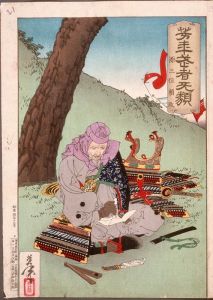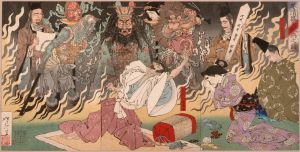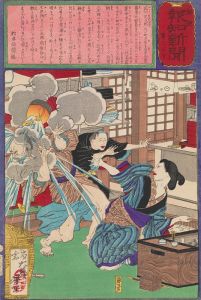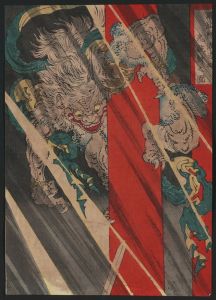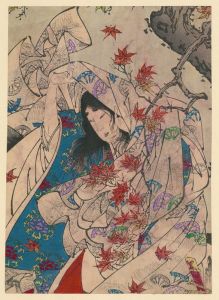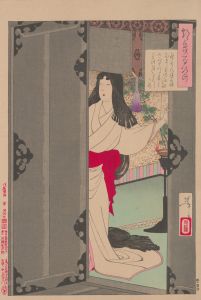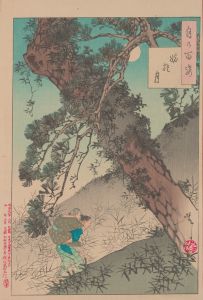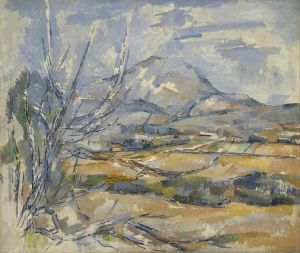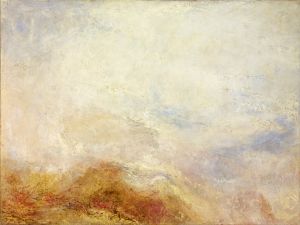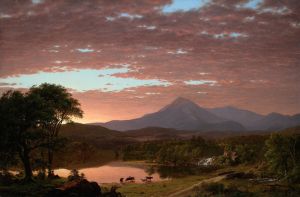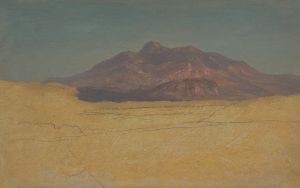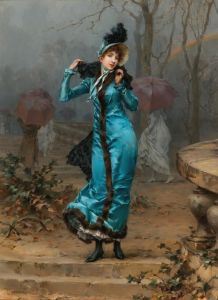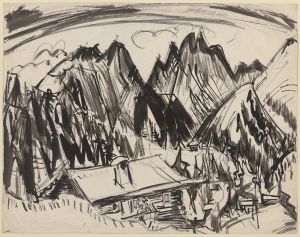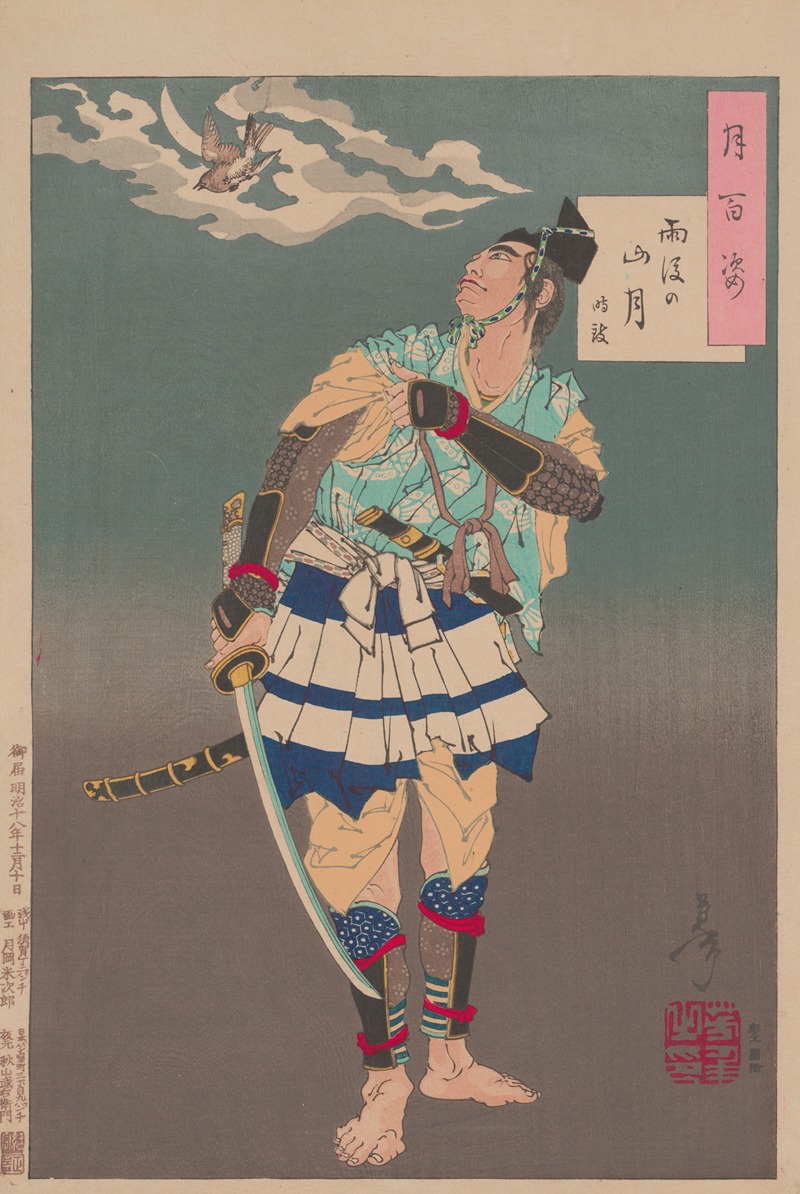
Mountain moon after rain
A hand-painted replica of Tsukioka Yoshitoshi’s masterpiece Mountain moon after rain, meticulously crafted by professional artists to capture the true essence of the original. Each piece is created with museum-quality canvas and rare mineral pigments, carefully painted by experienced artists with delicate brushstrokes and rich, layered colors to perfectly recreate the texture of the original artwork. Unlike machine-printed reproductions, this hand-painted version brings the painting to life, infused with the artist’s emotions and skill in every stroke. Whether for personal collection or home decoration, it instantly elevates the artistic atmosphere of any space.
"Mountain Moon After Rain" is a woodblock print by the renowned Japanese artist Tsukioka Yoshitoshi, part of his celebrated series "One Hundred Aspects of the Moon" (Tsuki Hyakushi). Yoshitoshi, a master of the ukiyo-e genre, was active during the late Edo and early Meiji periods, a time of significant cultural and political change in Japan. His work is noted for its dynamic compositions, innovative use of color, and the ability to convey complex emotions and narratives.
The "One Hundred Aspects of the Moon" series, created between 1885 and 1892, is one of Yoshitoshi's most famous works. It consists of 100 woodblock prints, each depicting a scene inspired by Japanese and Chinese history, literature, folklore, and theater, all unified by the motif of the moon. This series is considered a masterpiece of the late ukiyo-e period and showcases Yoshitoshi's mature style, characterized by its bold lines, vibrant colors, and dramatic imagery.
"Mountain Moon After Rain" is one of the prints in this series, illustrating Yoshitoshi's fascination with the moon as a symbol of beauty, mystery, and the passage of time. While specific details about this particular print are limited, it is consistent with the themes and artistic techniques found throughout the series. Yoshitoshi often drew upon historical and legendary figures, capturing moments of introspection, heroism, or transformation, all under the serene or haunting presence of the moon.
Yoshitoshi's work, including "Mountain Moon After Rain," reflects the transitional period of Japan as it moved from the isolationist policies of the Edo period to the rapid modernization of the Meiji era. His prints often juxtapose traditional Japanese themes with the influences of Western art, which became increasingly prevalent during his lifetime. This blend of old and new is evident in his use of perspective, shading, and anatomical accuracy, which were influenced by Western techniques, while still maintaining the quintessentially Japanese aesthetic of ukiyo-e.
The "One Hundred Aspects of the Moon" series was produced using traditional woodblock printing techniques, a collaborative process involving the artist, carvers, and printers. Yoshitoshi would create the initial designs, which were then carved into cherry wood blocks by skilled artisans. These blocks were used to apply ink to handmade paper, layer by layer, to produce the final image. This meticulous process allowed for the rich detail and vibrant colors that characterize Yoshitoshi's prints.
Tsukioka Yoshitoshi's legacy as one of the last great masters of ukiyo-e is cemented by works like "Mountain Moon After Rain." His ability to capture the ephemeral beauty of the moon and its symbolic resonance across cultures and time periods continues to captivate audiences today. His prints are celebrated not only for their aesthetic qualities but also for their narrative depth and historical significance, offering a window into the cultural landscape of 19th-century Japan.
Through "Mountain Moon After Rain" and the broader "One Hundred Aspects of the Moon" series, Yoshitoshi's work remains a testament to the enduring power of art to transcend time and cultural boundaries, inviting viewers to reflect on the universal themes of nature, humanity, and the passage of time.





